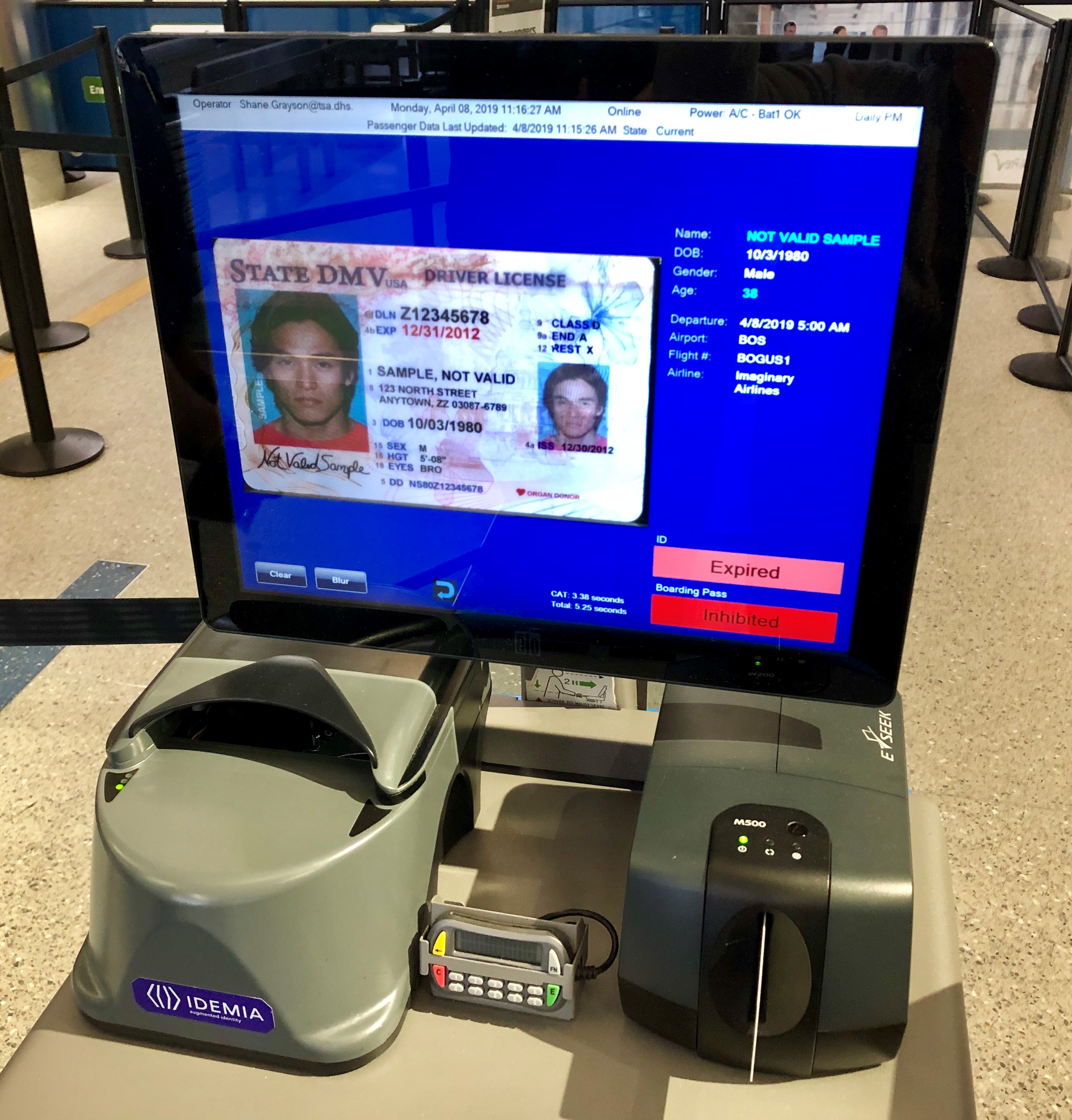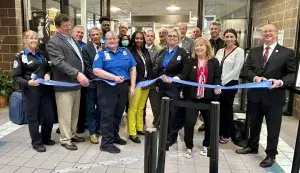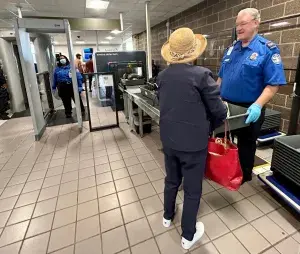 A CAT unit reads a driver’s license that was inserted into the unit and indicates that this license has expired and is no longer valid for passage through the checkpoint. (TSA photo)
A CAT unit reads a driver’s license that was inserted into the unit and indicates that this license has expired and is no longer valid for passage through the checkpoint. (TSA photo)
SALISBURY, Md. — The Transportation Security Administration (TSA) has installed two new security technologies that enhance screening capabilities of travelers and their belongings at the Salisbury-Ocean City Wicomico Regional Airport security checkpoint. A new credential authentication technology (CAT) unit and a 3-D computed tomography scanner are now in use at the airport’s checkpoint.
Travelers first will engage with the new CAT technology at the travel document checking podium. A passenger’s ID is inserted into the unit, which confirms the validity of a traveler’s identification and their flight information.
“The credential authentication technology enhances detection capabilities for identifying fraudulent documents such as driver’s licenses and passports at the checkpoint and increases efficiency by automatically verifying passenger identification,” said Christopher Murgia, TSA’s Federal Security Director for Maryland. “For example, we’ll know immediately if the ID has expired or has been altered in some fashion to change the age, address or photo of the individual. The system will also confirm the passenger’s flight status in near real time through a secured connection, which enables us to confirm that this traveler is ticketed to fly out of this airport today.”
CAT units authenticate more than 2,500 different types of IDs including passports, military common access cards, retired military ID cards, Department of Homeland Security Trusted Traveler ID cards, uniformed services ID cards, permanent resident cards, U.S. visas and driver’s licenses and photo IDs issued by state motor vehicle departments. When a traveler hands the security officer their ID, the officer places it in the CAT unit, which scans the ID and informs the security officer whether the ID is valid.
Travelers who approach the TSA travel document checking podium do not have to show their boarding pass because the CAT unit verifies that the traveler is ticketed to travel out of the airport for a flight that day. Even with TSA’s use of the credential authentication technology, travelers still need to check-in with their airline in advance and bring their boarding pass to their gate agent to show the airline representative before boarding their flight.
After passing through the travel document checking podium, travelers will then approach the new state-of-the-art advanced technology computed tomography (CT) scanner, which uses 3-D imaging that provides critical explosives detection capabilities for screening carry-on items.
“Our officers’ use of CT technology substantially improves our threat detection capability at the checkpoint,” Murgia said. “Previously, our screening technology for carry-on bags used 2-D images. The CT technology applies advanced algorithms for the detection of explosives, including liquid explosives and other threat items.”
The system applies sophisticated algorithms for the detection of explosives by creating a 3-D image that can be viewed and rotated 360 degrees on three axes for thorough visual image analysis by a security officer. This new technology creates such a clear image of a bag’s contents that the system can automatically detect explosives, including liquids, by shooting hundreds of images with an X-ray camera spinning around the conveyor belt to provide security officers with the three-dimensional views of the contents of a carry-on bag.
It takes a few extra seconds for the security officer to view the image and rotate it to get a better understanding of its contents, however in most instances, rotating the image allows the security officer to identify an item inside the bag and clear it without a need to open it for inspection. Checkpoint CT technology should result in fewer bag checks. However, if a bag requires further screening, a transportation security officer will inspect it to ensure that a threat item is not contained inside.
CT units have a slightly smaller entry tunnel and not all larger carry-on bags will fit into the units. TSA recommends that large carry-on items be checked with the airline.


